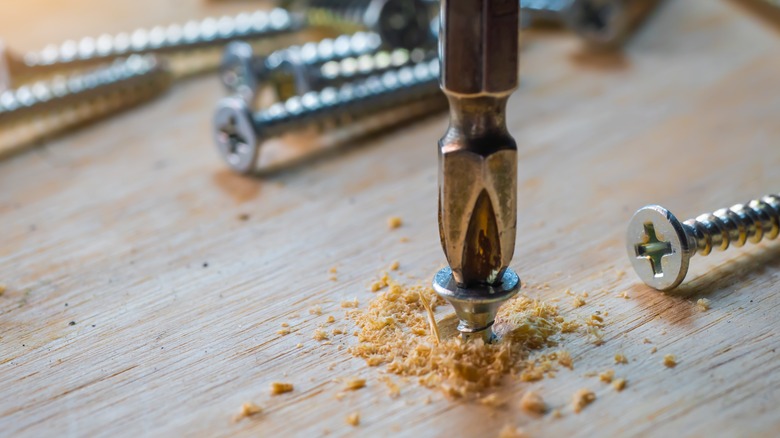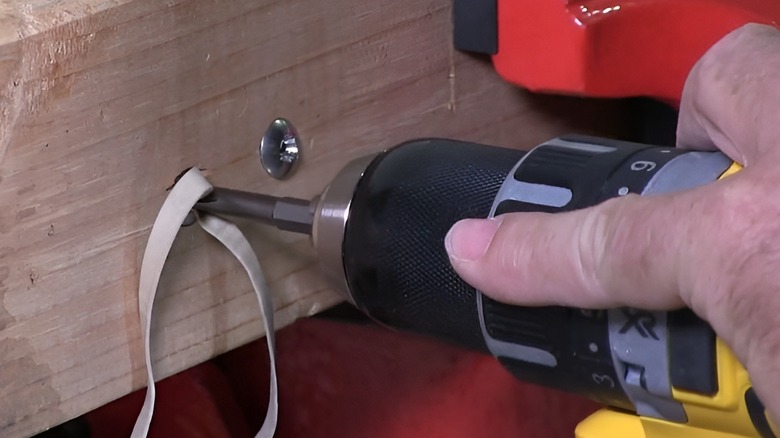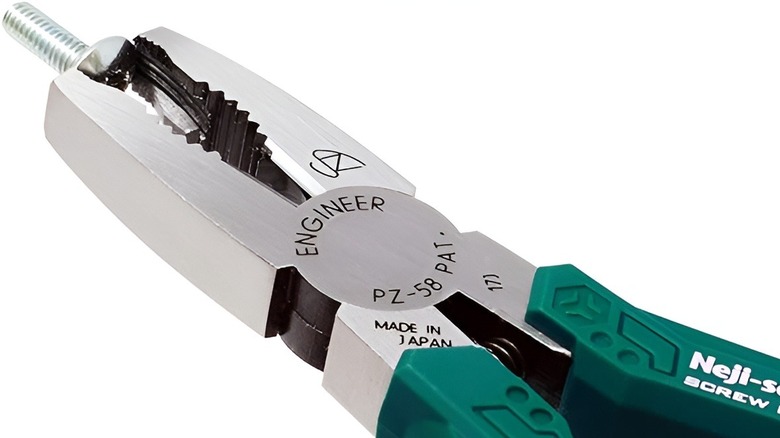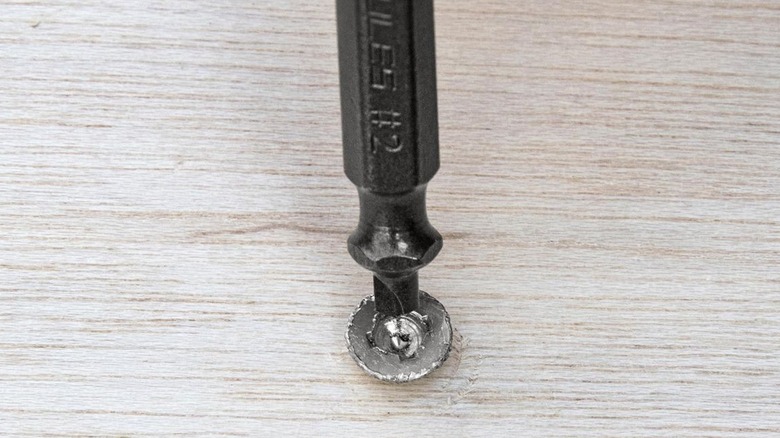3 Easy Ways To Remove A Stripped Screw
We may receive a commission on purchases made from links.
No matter how powerful your drill is, there's always the chance that you'll run into one of a DIYer's worst nightmares — a stripped screw. No matter your experience level, removing a stripped screw is not as straightforward a process as taking out a regular one, but that doesn't mean you're out of luck.
Far from in fact, as there are a handful of techniques you can employ to take out stripped screws that only require some simple tools and a little creative thinking. Depending on your situation, you'll either be using a rubber band, screw extraction pliers, or a screw extractor tool set. The method that works best for you will largely be determined by how deep the screw is lodged into the surface and the severity of the damage it has endured. Nevertheless, these tools, along with your trusty drill or screwdriver, will get the job done in the easiest way possible.
How to remove a stripped screw with a rubber band
Before purchasing a new tool to get rid of a stuck, stripped screw, your ideal solution might be closer by than you think. They may not look it, but those rubber bands sitting in your drawer could be an efficient way of fixing your problem. They are thin and flexible enough to be spun around by a drill or screwdriver, but tough enough to add the necessary grip needed to perform this task. With that said, here's how to remove a stripped screw using a rubber band:
- Place the rubber band across the head of your screw.
- Press the screwdriver tip down firmly on top of the screw head.
- Slowly turn the screwdriver counterclockwise.
Ensure you're placing a good amount of pressure on the screwdriver as you're turning it. While it may not prove as effective at taking on severely stripped screws, it should still work in most circumstances.
How to remove a stripped screw with screw extraction pliers
Over the years, manufacturers have developed a number of products specifically made to tackle this issue. Rubber bands can be useful, but investing in a tool specifically made to remove stripped screws is a smart move — especially if you work with screws on a regular basis.
Screw extraction pliers are one of these tools you'll wish you had sooner. While they might appear similar to regular pliers, what sets these tools apart is that they are specifically designed to grasp the head of a screw and remove it with ease. Here's how to use them:
- Align the pliers around the stripped screw head. Make sure they are parallel to the surface.
- Firmly clamp the jaws around the screw head.
- Secure the screw head and rotate it counterclockwise, adding even pressure while doing so.
When buying screw extraction pliers, make sure that you choose a size appropriate to the type of screw you're using.
How to remove a stripped screw with a screw extractor tool
Another extremely useful resource to have on hand is a screw extractor set. These handy little tools can be attached to your drill and inserted into the stripped screw. With the drill in reverse, they can then effectively remove the screw. There are a wide variety of screw extractor sets available, with an assortment of screw head sizes, and with some offering support for specific, speciality screws.
For most screws, you'll be using a double headed screw extractor, which has one end dedicated to burnishing the screw and the other end made for extracting. Here's how to use them:
- Set your drill in reverse.
- Place the extraction end of the tool into the drill chuck, with the burnisher end sticking out.
- Fit the burnisher into the stripped screw head, and steadily run the drill until there's a depression in the screw head.
- Remove the bit and turn it around to allow the extraction end to protrude.
- Reverse your drill and firmly apply pressure to the screw head to remove it.
Be sure to do your research beforehand to find out what screw extractor set is likely to work best for you. Regardless of your choice, these powerful and versatile tools are unlikely to disappoint.



